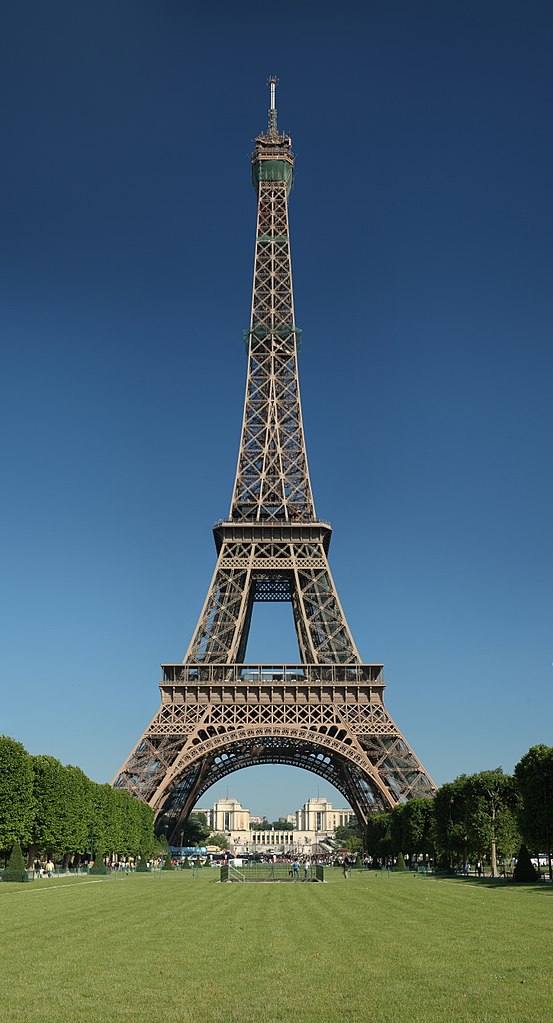The Author: Robert M. Vogel isassociate curator of mechanical and civil engineering, United States National Museum, Smithsonian Institution.
Second to the interest shown in the tower’s structural aspects was the interest in its mechanical organs. Of these, the most exceptional were the three separate elevator systems by which the upper levels were made accessible to the Exposition visitors. The design of these systems involved problems far greater than had been encountered in previous elevator work anywhere in the world. The basis of these difficulties was the amplification of the two conditions that were the normal determinants in elevator design—passenger capacity and height of rise. In addition, there was the problem, totally new, of fitting elevator shafts to the curvature of the Tower’s legs. The study of the various solutions to these problems presents a concise view of the capabilities of the elevator art just prior to the beginning of the most recent phase of its development, marked by the entry of electricity into the field.
The great confidence of the Tower’s builder in his own engineering ability can be fully appreciated, however, only when notice is taken of one exceptional way in which the project differed from works of earlier periods as well as from contemporary ones. In almost every case, these other works had evolved, in a natural and progressive way, from a fundamental concept firmly based upon precedent. This was true of such notable structures of the time as the Brooklyn Bridge and, to a lesser extent, the Forth Bridge. For the design of his tower, there was virtually no experience in structural history from which Eiffel could draw other than a series of high piers that his own firm had designed earlier for railway bridges. It was these designs that led Eiffel to consider the practicality of iron structures of extreme height.
In the year 1885, the Eiffel firm, which also had an extensive background of experience in structural engineering, undertook a series of investigations of tall metallic piers based upon its recent experiences with several lofty railway viaducts and bridges. The most spectacular of these was the famous Garabit Viaduct (1880-1884), which carries a railroad some 400 feet above the valley of the Truyere in southern France. While the 200-foot height of the viaduct’s two greatest piers was not startling even at that period, the studies proved that piers of far greater height were entirely feasible in iron construction. This led to the design of a 395-foot pier, which, although never incorporated into a bridge, may be said to have been the direct basis for the Eiffel Tower.
Preliminary studies for a 300-meter tower were made with the 1889 fair immediately in mind. With an assurance born of positive knowledge, Eiffel in June of 1886 approached the Exposition commissioners with the project. There can be no doubt that only the singular respect with which Eiffel was regarded not only by his profession but by the entire nation motivated the Commission to approve a plan which, in the hands of a figure of less stature, would have been considered grossly impractical.
Between this time and commencement of the Tower’s construction at the end of January 1887, there arose one of the most persistently annoying of the numerous difficulties, both structural and social, which confronted Eiffel as the project advanced. In the wake of the initial enthusiasm—on the part of the fair’s Commission inspired by the desire to create a monument to French technological achievement, and on the part of the majority of Frenchmen by the stirring of their imagination at the magnitude of the structure—there grew a rising movement of disfavor. The nucleus was, not surprisingly, formed mainly of the intelligentsia, but objections were made by prominent Frenchmen in all walks of life. The most interesting point to be noted in a retrospection of this often violent opposition was that, although the Tower’s every aspect was attacked, there was remarkably little criticism of its structural feasibility, either by the engineering profession or, as seems traditionally to be the case with bold and unprecedented undertakings, by large numbers of the technically uninformed laity. True, there was an undercurrent of what might be characterized as unease by many property owners in the structure’s shadow, but the most obstinate element of resistance was that which deplored the Tower as a mechanistic intrusion upon the architectural and natural beauties of Paris. This resistance voiced its fury in a flood of special newspaper editions, petitions, and manifestos signed by such lights of the fine and literary arts as De Maupassant, Gounod, Dumas fils, and others. The eloquence of one article, which appeared in several Paris papers in February 1887, was typical:
Further, a prediction was made that the entire city would become dishonored by the odious shadow of the odious column of bolted sheet iron.
It is impossible to determine what influence these outcries might have had on the project had they been organized sooner. But inasmuch as the Commission had, in November 1886, provided 1,500,000 francs for its commencement, the work had been fairly launched by the time the protestations became loud enough to threaten and they were ineffectual.
Upon completion, many of the most vigorous protestants became as vigorous in their praise of the Tower, but a hard core of critics continued for several years to circulate petitions advocating its demolition by the government. One of these critics, it was said—probably apocryphally—took an office on the first platform, that being the only place in Paris from which the Tower could not be seen.





